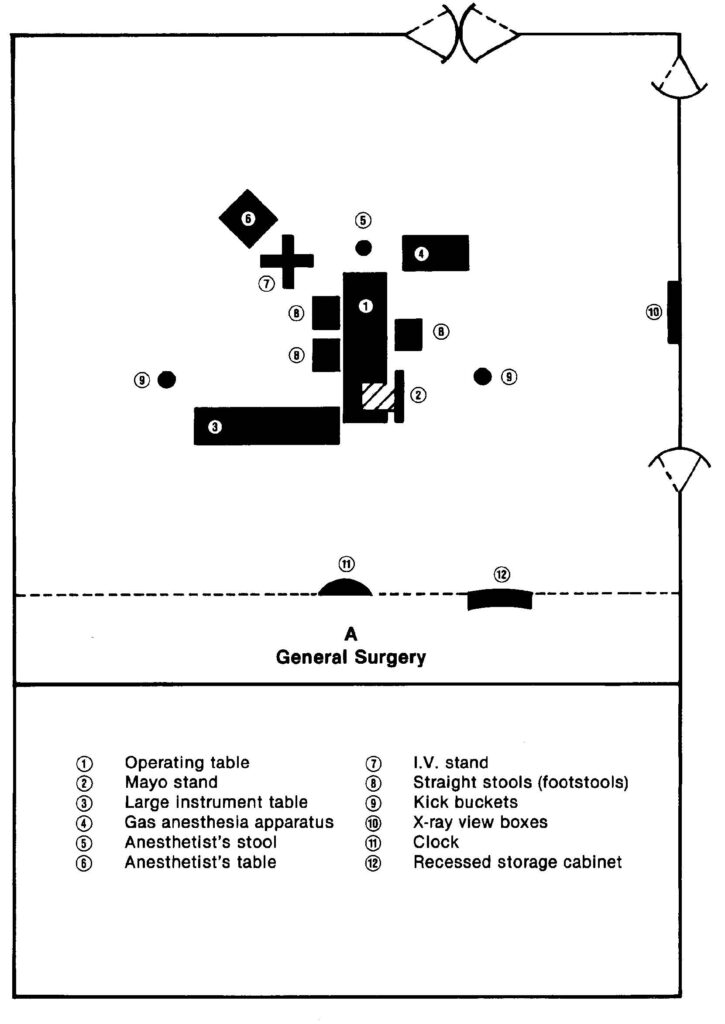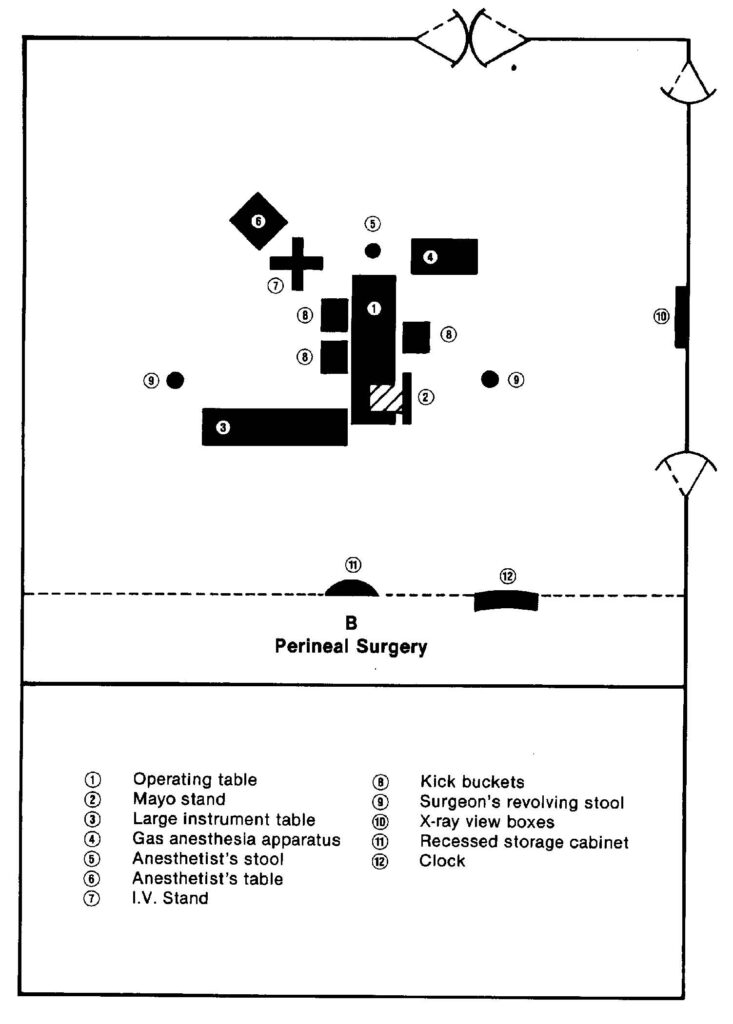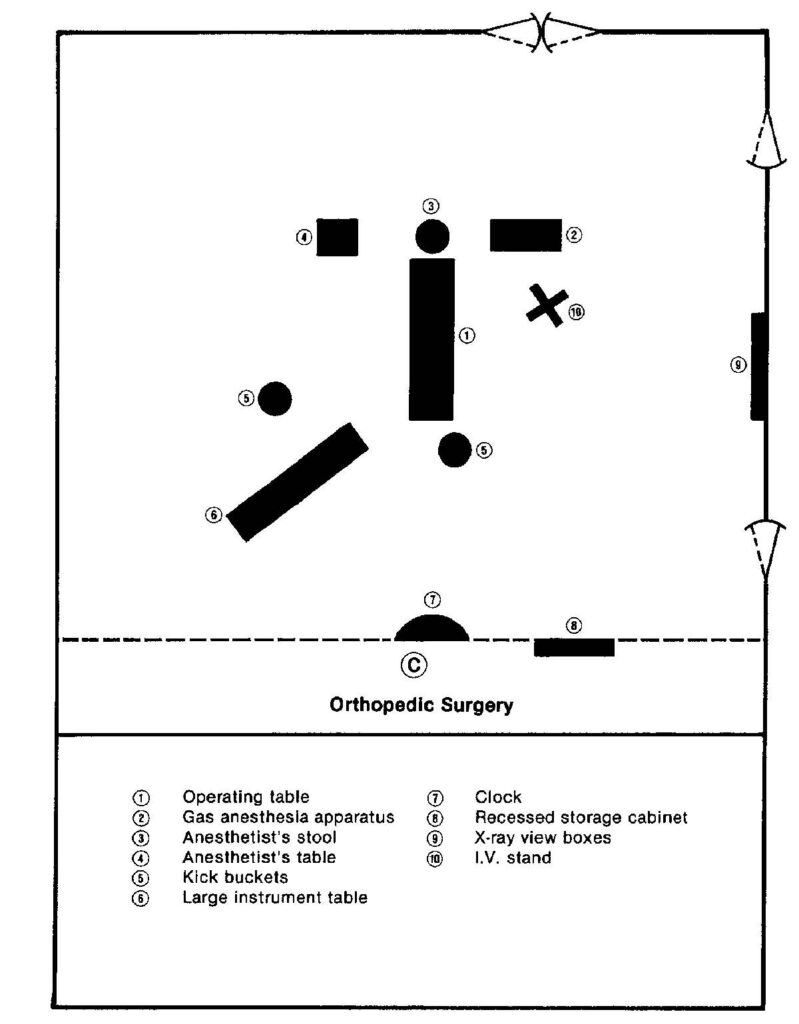1-24. INTRODUCTION
In addition to knowledge of the equipment used in an OR, the OR specialist must also be familiar with the arrangement of furniture and equipment for various kinds of operations, since one of his duties will be the preparation of the room for an operative procedure. Several factors are taken into consideration in determining the arrangement of the furniture for a particular operation. Although the OR specialist may not be required to make the decision as to the overall arrangement of the furniture, he must keep in mind the relationship between “sterile” and “unsterile” team members (refer to paragraphs 1-23i and 1-23j). The furniture should be grouped to facilitate the maintenance of aseptic technique. Furniture that will be draped for use by the “sterile” team members should be grouped together and adequate space should be allowed between this furniture and the equipment to be used by “unsterile” team members to promote sterile conditions.
1-25. PHYSICAL ARRANGEMENT OF ITEMS
a. Discussion. The furniture and equipment already discussed is common to all cases and is kept within each OR. However, the type of operative procedureand the method of administering anesthesia are the primary factors in determining the supplies and equipment that are required as well as their arrangement. Someof the equipment (normally kept in each OR but not scheduled for use on a particular case) may be pushed to the wall in one area where it will not interfere with the team member’s work during the case. Equipment used infrequently may be brought to an OR for a particular case and then returned to its storage area when the case is finished.
b. Grouping of Equipment. The arrangement of the operating table and the supply tables is determined not only by the type of case, but also by the location of the operative area and the number supplies necessary. The furniture may be grouped with the patient’s head toward the door or toward any other part of the room.
Figures 1-30 A, B, C, and D show suggested grouping of items for general surgery, perineal surgery, orthopedic surgery, and neurosurgery. In the figures, note the placement of sterile instrument tables with relation to the area for the anesthetist (anesthetist’s stool). All sterile equipment and the “sterile” team members are as far away from the “unsterile” anesthesiologist and his equipment as feasible to help promote the maintenance of aseptic technique.
1-26. NEED FOR QUIET
During an operative procedure, all conversation in the OR should be kept to a minimum to aid concentration, lessen distractions, allow personnel to work both as quickly and efficiently as possible, and help promote aseptic technique.
1-27. CLEANUP FOLLOWING SURGERY
Just as important as the many aspects of the surgery itself is the cleanup afterwards and the manner in which it is done. The element of time is pressing between cases; therefore, the scrub and the circulator must work together as quickly as possible to remove all used equipment and supplies, clean the room, and prepare it for the next case. The usual time allotted is the same as for the original preparation of the room–20 to 30 minutes. Cleanliness is of utmost importance since aseptic technique cannot be attained or maintained in an environment that is not scrupulously clean.




